Summit for a better understanding of our future wellbeing
 George R. Ebanks writes: I am not sure if it should be hosted by our government or the Cayman Islands Chamber of Commerce, but a “Summit” needs to be called and held, preferably in an open arena, where our financial institutions and service providers can be called together with our government hierarchy to openly discuss, debate and resolve some issues that have been having a direct impact on our collective cost of living. This summit must include our financial lending institutions, our health insurance providers and our fuel importers.
George R. Ebanks writes: I am not sure if it should be hosted by our government or the Cayman Islands Chamber of Commerce, but a “Summit” needs to be called and held, preferably in an open arena, where our financial institutions and service providers can be called together with our government hierarchy to openly discuss, debate and resolve some issues that have been having a direct impact on our collective cost of living. This summit must include our financial lending institutions, our health insurance providers and our fuel importers.
Here are just three of the items that I would like to see included in the agenda for the business summit:
1. Cayman Prime Lending Rate
Since late 2008, the New York benchmark NY Prime rate has stood unchanged at 0% to .25%. In the Cayman Islands however, our banks/financial lending institutions, are allowed to “tack on” a surcharge of 3 percentage points (3%) and arrive at an arbitrary rate of 3 ¼% and call it “ Cayman Prime”.
The automatic “add on” of 3% is said to be to allow the banks/ financial lending institutions to provide for their ‘administrative cost’ of administering their loan portfolio. Thus, anyone going to enquire about or to obtain a mortgage loan will find that the local banks’ lending prime rate begins at 3¼%. They then will add on a further 2 percentage to 3 percentage (2% to 3%) points over and above the base rate of 3¼% and arrive at a lending rate to the homeowner of approximately 5¼% to 6¼%. Never mind of course that on the deposit side of the equation, the real market interest rates are adhered to.
That is why you will find that your interest rate being earned on your savings and your term deposits (fixed deposits) will only be around half percentage point (.50%) at the moment. This is due to the fact that interest rates the world over are tied to the renowned and accepted New York bank rate, which as stated earlier still hovers around 0% to .25%.
I should mention that it is these same funds (i.e. funds which are deposited by customers into their savings and fixed term deposits) that are then on-lent to the general borrowing public at exorbitant interest rates, starting at the minimum 3¼% “ Cayman Prime”. Of course, if one borrows for what is called “consumer loans” (e.g. car loans) the interest rate can be double that which is normally charged for home/property secured mortgage loans.
I should not forget to mention here that I recently assisted a personal friend who had borrowed money in 2006 at 19% — a rate which she could not service and which the lending institution in question knew from the outset of granting the loan that she could not sustain. The end result — the bank/financial lending institution threatened imminent foreclosure proceedings, which almost gave the single parent borrower a nervous breakdown.
The summit should endeavor to have our financial lending institutions justify and explain, by the production of transparent and empirical evidence, how they arrived at the automatic 3% “add on” to the real NY prime lending rate and arrive at what is called “Cayman Prime” and which currently stands at 3¼% (based on the top end of the existing NY Prime rate of .25%).
Perhaps it is worthy of note that a bank mortgage of $200,000 amortized over 15 years at a rate of 6¼% requires a monthly repayment of $1,714.90. A mortgage loan for same amount and term but at 4% would require a sum of $1,479.40, a difference (savings to borrower) of some $236 in monthly repayments. This can be viewed as a savings to the borrowing customer and can be used towards other household living expenses.
2. Oil/Fuel Prices
I have written about this commodity and the fact that, while it impacts each and every sector of our economic life, there is absolutely no justification that we are paying close to CI$5.00 (US$6.10) per gallon for gasoline while the open commodity market reflects a price of US$1.98 a gallon and all leading financial and economic journals all giving voice to the fact that the world is experiencing an oil glut and that world prices for this commodity will continue to see downward pricing pressures going into the next few years.
Recently, the world powers (P+5) reached a nuclear deal with Iran that will see it being able to sell its vast oil reserves on the open market beginning in the new year 2016. Indeed, it is estimated that Iran has some 30 million barrels of oil stockpiled as a result of sanctions which were in effect up until this nuclear deal takes effect.
The oil is being purchased in the Gulf of Mexico and there is no real excuse that can be given to justify why to trans-ship fuel/oil across the Gulf of Mexico (a distance of some 1,430 nautical miles) can result in the per gallon price increasing by over 209% or $4.12 ($1.98/ $6.10). A recent article in the Los Angeles Times points to the fact that oil refineries in California are making the largest per gallon margins on sale of gasoline in their history.
This summit would engage the fuel/oil companies, both the importers and retailers, but especially our current oil importers, Esso-Sol and Rubis, and allow them to justify their current pricing practice.
We are paying some CI$3.50 over and above what the correct per gallon price should be for our fuel/oil being consumed. It impacts our cost of living across the totality of our daily lives because it impacts our food at the supermarket, the cost of a meal at a local restaurant, our import duties and our transportation costs.
3. Health Insurance Costs
I strongly believe that health insurance costs in the Cayman Islands are far too high when compared to other regional health insurance rates. The high cost of health insurance actually does not allow persons who employ workers to abide by the laws as they simply cannot afford to pay the very high insurance premium rates.
While the basic health insurance coverage offered by CINICO and others might suffice for the average young entry-level worker who is in good health, what is of concern is the many persons who retire or simply are not working and who require good health care insurance coverage. The per month premium of $300 to $450 is simply cost prohibitive. Most employers will extend coverage for three months after a long-term employee leaves or retires from the company, after which the individual is to seek their own insurance coverage. A good health insurance plan, with benefits extending to overseas tertiary care, can range up to $650 per month.
A discussion point for the business summit when focusing on this topic could explore ways and means of having good health care coverage available locally at affordable prices and offering a fairly wide range of health care options.
Perhaps it is time for government to consider regulating this industry to the extent that even a system similar to “ObamaCare” is instituted and health insurance policies curtailed to one single health insurance provider, like CINICO.
It is without debate that the current health insurance premium rates in the Cayman Islands are too high and cannot be allowed to continue without exploring other possible cost reduction options, while retaining good quality health insurance coverage.
Category: Local News, Viewpoint






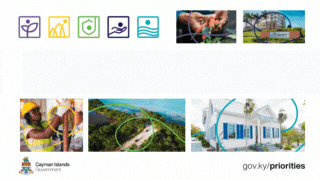







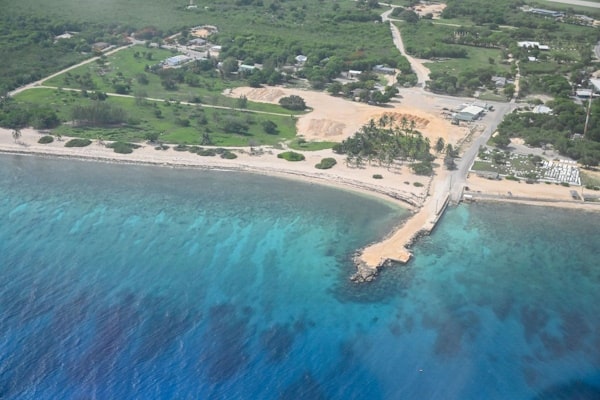
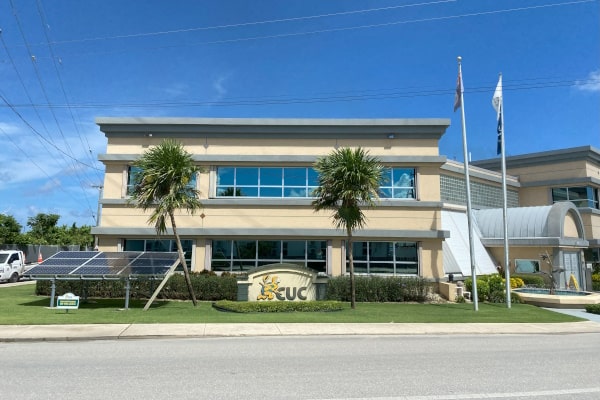








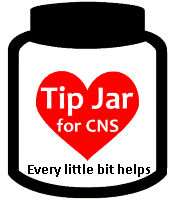










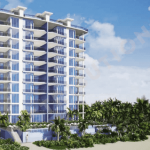
The real source of these costs are the high barriers to entry to the Cayman market caused primarily by restrictions on foreign investment but also by the problems with hiring staff and the endemic local corruption protecting existing local interests and politically connected capital accumulators.
First of all, understand that companies need to make money or they just cease to exist. Kind of like when your blood stops flowing.
Banks: because they can. With a country of less than 60000 people we don’t actually have the volume of business that indices a lot of competition. Even when they have a virutual monopoly the reality of dealing with their “lot” isn’t a walk in the park. if the loans were such a rip off and there was room in the market for another option to make money don’t you think there would be another bank show up to serve that market?
Fuel: we have an incompetent regulator. They claim there is no transparency to what the importers pay for inbound fuel shipments. I ask, don’t they have to pay duty on the value of the shipment and didn’t customs just put the super sophisticated tariff categories?
Health Insurance: If I thought that we could trust the government to manage it even close to adequately I would say we need to move to a country wide system. Called single payer in the industry terms. How we have adopted the U.S. broken system where only the wealthy get decent health care and the poor get none is rediculous. Yes, putting Cinoco in charge of all of our coverage might be similar to a game of Russian roulette but my botched bypass leading to my early demise might lead to our kids having a 1st world health care system and take us out of this 3rd world system.
Don’t need a summit, just realize that capitalism drives things. Maybe spend your time working on improving things instead of complaining and asking government to fix it.
In my opinion the biggest rip-off by the banks in Cayman is the exchange rate they impose on US$ transactions. There is no exchange risk as the CI/US$ rate is now fixed.
This exorbitant exchange rate was introduced in the ’70s on a temporary basis when one of the banks omitted to cover their foreign exchange position and they lost a lot of money.
Boohoo and we are still paying for that today.
Cayman LIBOR bench mark rate has never been justified. The U.S. is almost a universal currency, so the chances are they are primarily borrowing in U.S. Dollars. CIMA has never released publications or justifications on the spreads that Cayman-based banks settle on. So, we will never know, without doing our own research, whether the LIBOR rate offered is fair game, or scams – similar to these “Glut Institutions”:
http://www.npr.org/sections/thetwo-way/2015/05/20/408215382/big-banks-pay-5-6-billion-plead-guilty-to-felonies-over-currency-fixing-scheme
Agree fully with fuel premium (and lack of quality regs), and extortionate health premiums and antiquated coverage tables. Anyone paying more than 5% on their mortgage with home equity should call their banker or shop a refinance at competitor banks to lower their service payments. Credit card debt (often incurring interest at well over 10%pa) can be paid down in same transaction along with legal fee. Now is the time – and it’s up to consumers to help themselves. The banks will not encourage their own customers to pay less!
THREE FAT,VERY FAT COWS BELLED!!!
You make some good points George on Health Insurance but on bank lending “Cayman Prime rate” does not differ a great deal from the USA:
http://data.worldbank.org/indicator/FR.INR.LEND/countries
I wonder why Cayman data is never included on these “World Tables”?
Because we are not a “country”.
Well it does differ quite alot as you can structure a fixed rate mortgage in the US for 1 1/2% (30 yrs). That is based on NY Prime (.25%) plus 1 1/4% spread.
In Cayman the “spread” starts AFTER (ON TOP OF!) the 3% “surcharge”.